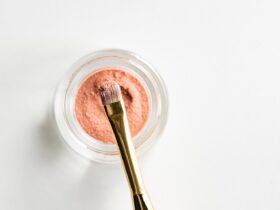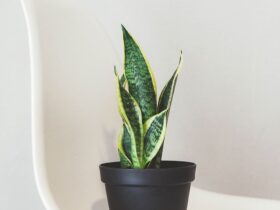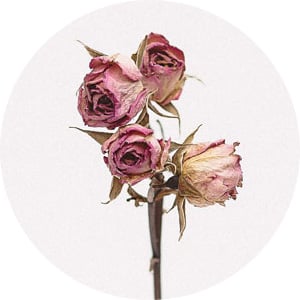Perfume, a word derived from the Latin “per fumum” meaning “through smoke,” has a history as rich and complex as the scents it encompasses. From ancient civilizations burning incense to appease the gods to modern-day perfumers crafting intricate olfactory masterpieces, the allure of fragrance has captivated humanity for millennia. This article delves into the fascinating world of perfume and fragrance, exploring its history, composition, classification, and the art of selecting and wearing the perfect scent.
A Brief History of Perfume
The earliest evidence of perfume use dates back to ancient Mesopotamia and Egypt. Egyptians used fragrant oils and balms for religious ceremonies, embalming rituals, and personal adornment. Kyphi, a complex perfume composed of sixteen ingredients, was particularly prized. The Greeks and Romans further refined perfumery techniques, importing fragrant materials from across their empires. The Romans, especially, were known for their lavish use of perfumes, scenting everything from their bodies to their homes.
The art of perfumery experienced a significant revival in the Middle Ages, largely due to the influence of Arab chemists and alchemists. They developed methods for distilling alcohol, a crucial component in modern perfumes. The Islamic world also played a vital role in preserving and expanding knowledge of botany, leading to the cultivation and use of numerous new fragrant plants. The Crusades facilitated the reintroduction of these techniques and materials to Europe.
The Renaissance saw the rise of perfume as a luxury item in Europe. Catherine de Medici, upon marrying King Henry II of France, brought her personal perfumer, René le Florentin, with her, establishing a perfume industry in France. Grasse, in the south of France, became a center for perfume production, renowned for its fields of roses, jasmine, and lavender. The 18th century witnessed the development of eau de cologne, a lighter, more refreshing fragrance that became immensely popular.
The 19th and 20th centuries brought about significant advancements in perfumery, thanks to the development of synthetic aroma chemicals. These synthetics allowed perfumers to create fragrances that were previously impossible to achieve using only natural ingredients, opening up a vast new world of olfactory possibilities.
Understanding Perfume Composition: The Fragrance Pyramid
Perfumes are typically described using the concept of a “fragrance pyramid,” which outlines the different layers of scents that are released over time:
- Top Notes (Head Notes): These are the initial, light, and volatile scents that you smell immediately after applying a perfume. They typically last for about 5-15 minutes and are designed to create a first impression. Common top notes include citrus fruits (lemon, grapefruit, bergamot), herbs (lavender, mint), and light fruits (apple, berries).
- Middle Notes (Heart Notes): These notes emerge after the top notes fade and form the core of the fragrance. They are generally more complex and rounded than the top notes and last for several hours. Common middle notes include floral scents (rose, jasmine, ylang-ylang), spices (cinnamon, clove, cardamom), and fruity notes (peach, plum).
- Base Notes (Drydown): These are the long-lasting, grounding notes that anchor the fragrance and provide depth and longevity. They emerge after the middle notes fade and can last for several hours or even days. Common base notes include woody scents (sandalwood, cedarwood, vetiver), musks, amber, vanilla, and patchouli.
The interaction of these notes creates the overall character and complexity of a perfume. A skilled perfumer carefully balances these notes to create a harmonious and appealing fragrance.
Classifying Fragrances: Perfume Types and Concentrations
Fragrances are classified based on their concentration of perfume oil, which determines their strength and longevity:
- Perfume (Parfum): This is the highest concentration of perfume oil (20-40%) and typically lasts the longest, often for 6-8 hours or more. It is also the most expensive.
- Eau de Parfum (EdP): This contains a concentration of 15-20% perfume oil and lasts for 4-5 hours. It is a popular choice for everyday wear.
- Eau de Toilette (EdT): This has a concentration of 5-15% perfume oil and lasts for 2-3 hours. It is a lighter and more refreshing option.
- Eau de Cologne (EdC): This contains a concentration of 2-4% perfume oil and lasts for about 2 hours. It is the lightest and least expensive option.
- Eau Fraiche: Similar to Eau de Cologne, but with a lower concentration of fragrance oil (1-3%).
In addition to concentration, fragrances are also classified based on their dominant scent families. Some common fragrance families include:
- Floral: Characterized by dominant floral notes such as rose, jasmine, lily of the valley, and tuberose.
- Oriental (Amber): Rich, warm, and spicy fragrances with notes of amber, vanilla, musk, resins, and spices.
- Woody: Earthy and grounding fragrances with notes of sandalwood, cedarwood, vetiver, patchouli, and moss.
- Fresh: Clean and refreshing fragrances with notes of citrus, aquatic notes, green notes, and herbs.
- Fruity: Sweet and vibrant fragrances with notes of berries, apple, peach, and other fruits.
- Chypre: A complex fragrance family characterized by a combination of citrus, oakmoss, labdanum, and patchouli.
- Fougere: A classic masculine fragrance family characterized by a blend of lavender, coumarin, oakmoss, and geranium.
Choosing the Right Fragrance: A Personal Journey
Selecting a fragrance is a personal journey that involves understanding your preferences, skin chemistry, and the occasion for which you will be wearing the scent. Here are some tips to guide you:
- Sample Before You Buy: Always try a perfume on your skin before purchasing it. Perfume interacts with your skin chemistry, and the scent can smell different on different people.
- Consider the Season: Lighter, fresher fragrances are generally preferred in warmer weather, while richer, warmer fragrances are more suitable for cooler months.
- Think About the Occasion: A light and subtle fragrance may be appropriate for the office, while a bolder fragrance may be suitable for a night out.
- Understand Your Preferences: Experiment with different fragrance families to discover which scents you enjoy most.
- Don’t Overdo It: Less is often more when it comes to perfume. Apply sparingly to pulse points such as the wrists, neck, and behind the ears.
The Art of Wearing Perfume
The way you wear perfume can significantly impact its longevity and projection. Here are a few tips to maximize your fragrance experience:
- Apply to Pulse Points: Pulse points are areas where your blood vessels are close to the skin’s surface, generating heat that helps diffuse the fragrance.
- Moisturize Your Skin: Perfume lasts longer on moisturized skin. Apply a fragrance-free lotion or oil before applying your perfume.
- Don’t Rub: Rubbing your wrists together after applying perfume can break down the fragrance molecules and alter the scent.
- Consider Layering: Layering different scented products, such as body lotion, shower gel, and perfume, can create a more complex and long-lasting fragrance.
- Store Properly: Store your perfume in a cool, dark place to protect it from heat and light, which can degrade the fragrance over time.
Conclusion
Perfume is more than just a pleasant scent; it’s a powerful tool for self-expression, a memory trigger, and a reflection of personal style. Understanding the history, composition, and classification of fragrances can empower you to make informed choices and embark on a fragrant journey of self-discovery. Whether you prefer a classic floral, a spicy oriental, or a fresh aquatic scent, there’s a perfume out there waiting to be discovered that perfectly complements your unique personality and enhances your overall presence.
Frequently Asked Questions (FAQs)
















Leave a Reply